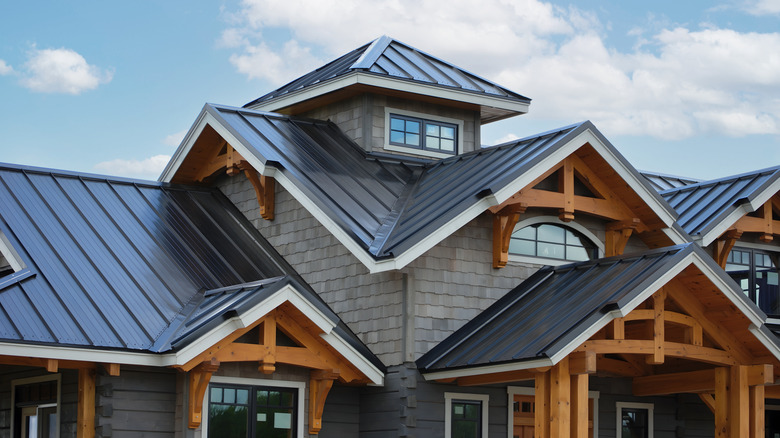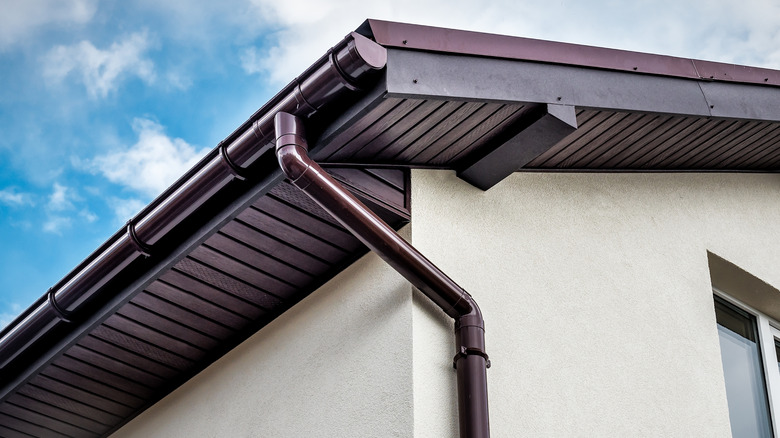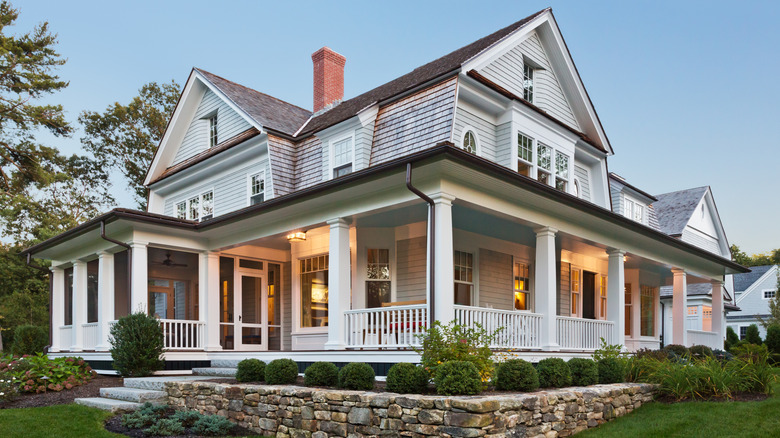What Is Fascia On A House? (And How It Differs From Trim)
Quick: can you identify the fascia, soffit, and trim on a house? Glancing at the front of your home, you've likely noticed the contrasting trim pieces and accents that add to the architectural detailing. But you might not spend much time thinking about the purpose of those details and how they help protect your home or even which pieces of material are which. Fascia and trim are both key parts of your home's exterior that cover edges and joints where other materials end. They help to protect your house from elements in different ways.
Trim and fascia both give your home more curb appeal by finishing off the edges and creating a seamless look, but they also play an important part in protecting it from the elements. Fascia is a board, with the wide, flat side facing outward toward the street, that covers the area where the roof meets your exterior walls. It sits just below the roofline and is anchored to your roof trusses. Fascia is different than your soffits, which cover the bottom of the roof overhang. These two elements work together to cover the exposed roofing materials on your home's exterior.
Fascia plays a supporting role for the upper parts of your home, including your roof and shingles. It's also the spot where you attach gutters to your home. Meanwhile, trim is a much broader category of pieces on the exterior (and interior) of your home. Outside, you'll see trim surrounding doors and windows to protect those joints.
The purpose of fascia on a home
Your home's fascia serves multiple purposes. Fascia is a part of your roof rather than being simply a decorative exterior accent. By covering the ends of the roof rafters and trusses, it creates a finished look, but it also keeps moisture, rain, and other outdoor elements out of the roof and attic to prevent wood rot around your home. Closing the edges of the roof with fascia also keeps insects, rodents, and other pests out of your attic. If the board becomes damaged, it could allow moisture and pests inside your home, where they can cause major damage.
Fascia boards also provide support for various components that are essential to your roof, including the edge shingles and gutters. Your gutters attach securely to the fascia so they can move water away from your shingles as it runs off the roof to prevent leaks and damage. Soffits also attach to the fascia to cover the bottom of the roof trusses. Because your fascia supports these structures, it needs to be made from strong, durable material and attached properly to your home. Common fascia materials include wood, vinyl, PVC, and aluminum. The local climate often influences the decision on what type of material is used for fascia. Keeping your fascia in good shape, regardless of the material it's made of, maintains its structural integrity and prevents damage to other parts of your roof and home's structure.
Fascia vs. trim
Trim is a broad category that technically includes fascia, which can be considered a type of exterior trim. A variety of molding that hides small gaps and finishes the look of the project falls under the trim category. While fascia is only used on the exterior of your home, trim can be located inside and outside. Examples of interior trim types that will improve the appearance of the room include baseboards and quarter round that run along the bottoms of your walls and crown molding at the top of walls. With so many different types of trim, this building material comes in a wide range of sizes and profiles to cover various gap types and create distinct looks. Meanwhile, fascia is typically a flat 1 inch by 6 inch board made of durable material to serve its structural purpose. You can choose different colors and materials for your fascia to change the appearance, and some fascia materials are thicker or wider to match structural or climate needs.
From a functional standpoint, fascia provides support and protection for your shingles, roof, and gutters. Because of these functions, it's essential to keep your fascia in good condition and inspect it regularly to check for issues. Fascia also needs to be constructed from weather-resistant materials that can withstand repeated exposure to extreme temperatures, moisture, and various local weather events. Trim provides some protection by covering the gaps between two surfaces, but it also has a heavy aesthetic element. People often choose specific types of trim for decorative purposes. That's especially true of interior trim, which isn't exposed to outdoor elements.


